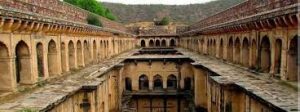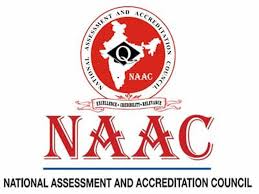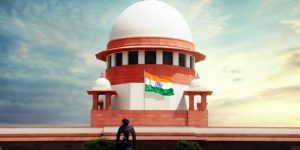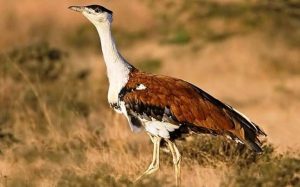Today’s Current Affairs: 28th March 2024 for UPSC IAS exams, State PSC exams, SSC CGL, State SSC, RRB, Railways, Banking Exam & IBPS, etc
Table of Contents
Monuments Of National Importance:

The Archaeological Survey of India (ASI) recently decided to delist 18 protected monuments as they have ceased to be of “national importance”.
- The Ancient Monuments and Archaeological Sites and Remains Act (AMASR Act), 1958 (amended in 2010), provides for the declaration and conservation of ancient and historical monuments and archaeological sites, and remains of national importance.
- Uttar Pradesh (745 monuments/sites) have the highest number.
- After considering the views/objections received within the stipulated period, the Central Government may declare the ancient monument to be of national importance by publishing a notification in the official gazette.
- Once a monument or a site is declared to be MNI, their protection and upkeep is the responsibility of the Archaeological Survey of India, under the Ministry of Culture.
- ASI undertakes the conservation, preservation, and maintenance of MNI throughout the country.
- The One-hundred-meter radius of the monument is then considered a ‘prohibited area’ where there is a ban on construction activities.
- Further 200 meters (i.e., 100+200 meters) are considered a ‘regulated area’ where there are regulations on construction.
- The ASI also has the power to delist monuments it deems to “have ceased to be of national importance” under Section 35 of the Act.
- Once a monument is delisted, the ASI becomes no longer responsible for protecting these monuments.
ICGS Samudra Paheredar:

The Minister of External Affairs recently visited Indian Coast Guard ship Samudra Paheredar, which is in Manila Bay in the Philippines, as part of an overseas deployment to ASEAN countries.
- ICGS Samudra Paheredar is a specialised Pollution Control Vessel (PCV) of the Indian Coast Guard.
- It is the second PCV of India(the first being ICGS Samudra Prahari).
- It was indigenously built by ABG Shipyard, Surat.
- It is stationed on the East Coast of India in Vishakhapatnam, Andhra Pradesh.
- The ship is propelled by twin diesel engines, producing power that is further enhanced by twin shaft generators for a maximum speed of 21 knots.
- At economical speed, the ship has an endurance of 6,500 nautical miles and can stay at sea for 20 days.
- The ship’s primary role is pollution response at sea and is equipped with the most advanced and sophisticated pollution response and control equipment for mitigating oil spills, which includes containment equipment like hi-sprint booms and river booms, recovery devices like skimmers and side sweeping arms. The ship is capable of unhindered oil-recovery operations.
- The special features include an integrated platform management system, a power management system and a high-powered external firefighting system.
- It is capable of operating one twin-engine ALH/ Chetak helicopter.
National Assessment And Accreditation Council:

The National Assessment and Accreditation Council (NAAC) has decided to introduce a binary categorisation of “accredited” or “not accredited” for higher educational institutions.
- National Assessment and Accreditation Council (NAAC) is an autonomous body of the University Grants Commission (UGC), under the Ministry of Education.
- It was established in 1994 in pursuance of the recommendations made by the National Policy of Education, 1986. It’s headquarter is in Bengaluru.
- Function is evaluation, assessment, and accreditation of Higher Education Institutions (HEIs) in the country.
- Assessment is a performance evaluation of an institution and its units and is accomplished through a process based on self-study and peer review using defined criteria.
- Accreditation refers to the certification given by NAAC, which is valid for a period of five years.
- The ratings of institutions range from A++ to C. If an institution is graded D, it means it is not accredited.
- HEIs with a record of at least two batches of students graduated or been in existence for six years, whichever is earlier, are eligible to apply for the process of Assessment and Accreditation (A&A) of NAAC and fulfill all the specified conditions.
- At present, the Assessment and Accreditation by NAAC is done on a voluntary basis.
- NAAC has identified seven criteria: i. Curricular aspects, ii. Teaching-learning and evaluation, iii. Research, Consultancy and extension, iv. Infrastructure and learning resources, v. Student support and progression, vi. Governance and leadership and vii. Innovative practices as the basis for its assessment procedure.
- It functions through its General Council (GC) and Executive Committee (EC), comprising educational administrators, policymakers and senior academicians from a cross-section of the Indian higher education system.
- The Chairperson of the UGC is the President of the GC of the NAAC
Ex-parte Injunction:

The Supreme Court recently said that the courts should not grant ex-parte injunctions against the publication of a news article, barring in exceptional cases.
- Ex-parte Injunction is a court order that is issued without hearing from the other party involved in the case.
- It is also known as a temporary restraining order.
- This type of injunction is only granted in emergency situations where there is a risk of irreparable harm if immediate action is not taken.
- In India, an injunction is a legal remedy available to parties who wish to prevent the other party from carrying out a certain action or behavior.
- Injunctions can be granted in a variety of situations, such as in cases of intellectual property infringement, breach of contract, or defamation.
- An injunction is a powerful legal tool that acts as a court order requiring a party to do or cease doing specific actions.
- It plays a crucial role in many legal battles, serving as a preventive measure to stop legal wrongs or as a remedy to enforce rights.
- Injunctions are a discretionary remedy and the court will consider various factors before deciding whether to grant an injunction.
- In India, the law regarding injunction is provided under the Specific Relief Act, 1963 and the Code of Civil Procedure, 1908.
- If a party violates the injunction, they may be held in contempt of court and could face penalties such as fines or imprisonment.
Krishi Integrated Command And Control Centre:

The Union Agriculture Minister inaugurated a Krishi Integrated Command and Control Centre (ICCC).
- Krishi Integrated Command and Control Centre is a tech-based solution involving multiple IT applications and platforms, housed in the Ministry of Agriculture & Farmers’ Welfare.
- It will enable comprehensive monitoring of the farm sector by making available at one place geospatial information received from multiple sources, including remote sensing; plot-level data received through soil survey and weather data from the India Meteorological Department (IMD) etc.
- It uses state of the art technologies such as artificial intelligence, remote sensing, and Geographic Information Systems (GIS) to collect and process large amounts of granular data — on temperatures, rainfall, wind speed, crop yields and production estimations — and presents it in graphical format.
- It provides information on crop yields, production, drought situation, cropping patterns (geographic region-wise and year-wise) in map, timeline and drill-down views.
- It uses platforms including the Krishi Decision Support System (DSS) to collect micro-level data, process it, and present the macro picture.
- It can create an ecosystem based on which individual farmer-level advisories can be generated through apps like Kisan e-mitra, a chatbot developed for PM-Kisan beneficiaries.
- The AI-/machine learning-based system will identify a farmer through his/ her mobile number or Aadhaar, and match it with the farmer’s field information obtain through land records, historical crop sowing information from the crop registry, weather data from IMD, etc.
- It will then generate a customised advisory in the local language of the farmer.
- For this, the system will use the Bhashini platform that allows translation into several Indian languages.
Meme Coins:

Meme coins often lacking in any real underlying value have gained significant popularity
- These are a unique category of cryptocurrencies, have gained significant popularity in the digital currency space.
- These trace their origin to the growth of meme culture on the internet.
- These are also known as ‘memetic tokens’ or ‘community coins’, meme coins are digital currencies created as a form of satire or humorous tribute to the internet culture.
- They often feature names, logos and branding that reference popular memes, jokes or internet phenomena.
- These are highly volatile in nature, subject to extreme changes in value over short periods, driven by the current buzz surrounding the token.
- They typically have a massive or uncapped supply, leading to very low values per token.
- These coins leverage blockchain technology, often utilising smart contracts on platforms like Ethereum and Solana.
- Creating a meme coin is relatively easy compared to traditional cryptocurrencies.
- With the proliferation of blockchain platforms and decentralized finance (DeFi) tools, virtually anyone can launch a meme coin with minimal technical expertise and resources.
- These coins are primarily driven by speculation and community engagement, lacking fundamental value or unique use cases.
- Also, the prices of meme coins can experience rapid fluctuations, making them risky investments.
Patents (Amendment) Rules, 2024: Changes

The Ministry of Commerce and Industry has notified the Patents Amendment Rules, 2024 making significant changes to Indian patent practice and procedure.
Changes Introduced Under Patents (Amendment) Rules, 2024:
- The timeline for filing the RFE is now reduced from 48 months to 31 months from the priority date.
- The reduced timeline for filing a Request for Examination (RFE) will accelerate the patent examination process.
- Applicants can simply file a single updated Form 3 after receiving the First Examination Report (FER).
- The Patent office issues an examination report to the applicant which is generally known as FER.
- Introduction of ‘Certificate of Inventorship’: To recognise inventors’ contributions to patented inventions.
- As the Indian patent certificate does not identify the inventors, this provision will allow inventors to be identified for their inventions.
- The frequency of filing working patents was reduced from once in a financial year to once in every three financial years.
- The time frame for submission of recommendations by an Opposition Board and the response time for applicants have been adjusted.
- A divisional application can be filed in respect of an invention disclosed in the provisional or complete application or a further divisional application.
- This amendment is in alignment with the recent decision of the Delhi High Court in Syngenta Limited v. Controller of Patents and Designs Case, 2023.
- The court clarified that divisional applications may be filed in respect of parent applications where the complete or provisional specification (and not necessarily the claims) of the parent application disclose a plurality of inventions.
Omnibus SRO Framework : Reserve Bank Of India

The Reserve Bank of India (RBI) has recently announced the finalisation of the Omnibus Framework for recognising Self-Regulatory Organisations (SRO) for its Regulated Entities (RE).
- The framework aims to address the increasing operations of regulated entities and the adoption of innovative technologies, while also improving industry standards for self-regulation
- The Omnibus Framework is a comprehensive set of guidelines and regulations for recognising Self-Regulatory Organisations (SROs).
- The omnibus SRO framework sets out common objectives, functions, eligibility criteria, and governance standards for all SROs, regardless of the sector.
- It also establishes membership criteria and terms for SROs to follow in order to be recognised by the RBI.
- The framework represents the minimum requirements, and recognised SROs are encouraged to develop their best practices.
- The Reserve Bank may impose sector-specific additional conditions when calling for applications to recognise SROs, within the framework’s broad parameters.
- It facilitates a coordinated and integrated approach to regulatory oversight while allowing for sector-specific guidelines to be issued separately for different sectors.
- Aims to foster transparency, professionalism, and independence within SROs to build confidence in the integrity of the sectors they regulate.
Great Indian Bustards : Supreme Court Constituted An Expert Committee

The Supreme Court (SC) has constituted an expert committee to balance the conservation and protection of the endangered Great Indian Bustard bird population with the country’s international commitments to promote Renewable sources of energy.
- The large-winged birds are on the brink of extinction, with one of the causes being frequent collisions with high-powered power cables running adjacent to its core habitats in Gujarat and Rajasthan.
- The Great Indian Bustard (Ardeotis nigriceps), the State bird of Rajasthan, is considered India’s most critically endangered bird.
- It is considered the flagship grassland species, representing the health of the grassland ecology.
- Its population is confined mostly to Rajasthan and Gujarat. Small populations occur in Maharashtra, Karnataka and Andhra Pradesh.
- Protection Status:
- IUCN Red List: Critically Endangered
- Convention on International Trade in Endangered Species of Wild Fauna and Flora (CITES): Appendix 1
- Convention on Migratory Species (CMS): Appendix I
- Wildlife (Protection) Act, 1972: Schedule I




